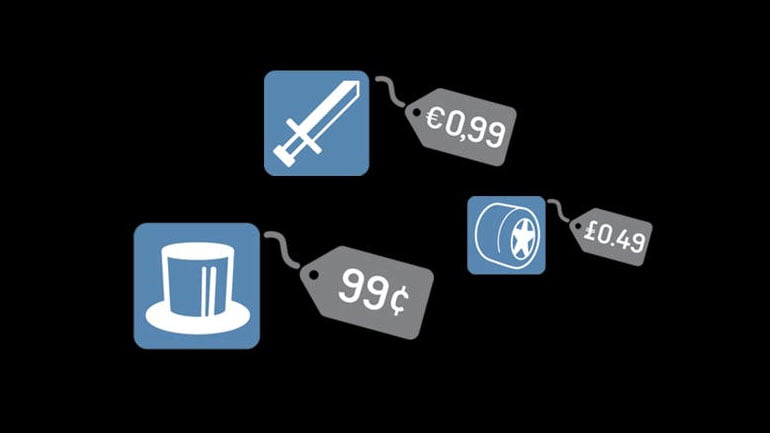There was a time when cheating in games was mostly for the enjoyment of experiencing what else a game had to offer. This was for different reasons; be it because a game was very difficult and cheats helped to provide a solution to allow the player to continue, or so that the player could experience different aspects of the game that they would otherwise not have come across, or so they could enjoy the game in a god-like fashion.
Cheats could be entered in two main ways; either by inputting a specific series of button presses, or by using a cheat system such as the GameShark or Action Replay. The reaction from the video game companies would vary; with some developers providing the cheats themselves (giving out the codes and/or having a cheat input in the options menu), whilst others like Nintendo (and hardware manufacturers in general) doing all in their power to have the systems banned, claiming that they threatened the stability of their consoles and the game code.
Regardless of the complaints from companies like Nintendo, the cheat systems were here to stay. Although to a certain extent Nintendo was right to discourage the use of such cheat systems, as by using them players initiated the risk of corrupting their save file, a risk which Action Replay mentions in passing when the system is used. Nonetheless, the risk was only on an individual level and unless they were really stuck and considered that they had no other option, or the use of cheats was to mess around, they could create a copy of the save file on another memory card mitigating any potential risk.
However [what is now] the previous console generation changed the environment in which video games operate in, therefore altering the impact cheats could potentially have. Prior to the launch of the Xbox 360, PS3 and even the Wii (to a certain extent), video game consoles saved to external elements. This was primarily to game cartridges themselves until the transition to saving progress to external memory cards. Although the original Xbox signified the change to come by including an internal hard drive, providing a unified save system as the default option.
The Seventh Generation of consoles (those from 2005) all favoured internal storage of some kind (though ironically the original 360 was the only one to provide an option without). What that generation also provided was the introduction of Achievements (and later Trophies). This in turn was also closely connected with the rapid development of online functionality that became increasingly tied to the wider operations of the consoles. With the presence of achievements, cheating was a means which threatened the credibility of these inconsequential badges of honour. Nonetheless this now provided a rationale for the negative consequences that result from using cheats. Achievements would be meaningless if they could be obtained via the use of cheats as opposed to achieving them through an in-game action. Whereas before the use of cheats only had a local impact, with the introduction of achievements and the role of online the impact of one’s cheating was now global.
Cheats became less commonplace as a result, with the most notable exception of cheats still incorporated into a game being GTA IV and Crackdown. Typing a cheat into a characters mobile phone in GTA IV would then disable Achievements on that save file (or play session regarding Trophies on PS3). Crackdown which shortly after launch received free DLC called “Keys to the City’ that provided a new game category selected from the main menu, this was completely separate to the main campaign and allowed the player to access to different cheats such as “God Mode”, like GTA IV Achievements were disabled in this mode.
However this was a rare occurrence and cheats quietly faded away by the half-way point of the seventh generation. With cheats now out of the equation, what was to be the alternative? Nintendo realising that rather than dumbing down their games in order to make them accessible, provided a system to negate the possibility of some players becoming frustrated with the more difficult sections of their games. Their solution was the creation of the “Super Guide”. Whilst it only appeared in a few games, if a player had repeatedly failed a level the game would ask if they would like the game to complete the remainder of the level for them. This was to provide a solution for young and casual players to continue through the game without the need for cheats. This feature later evolved into its current iteration which is present in the most recent Super Mario games where players are instead given a white Tanooki suit that provides their character with invincibility for the remainder of the level.
In recent years free-to-play [F2P] games (which are free at entry but rely on microtransactions to make money) have begun to take off, although there are still many who are sceptical and worry about the risk of unbalancing the in-game environment. Regardless of the sceptics many once small companies have made millions from this type of game which are designed from the ground up to support such a pay structure, which has seen significant success on mobile platforms.
This success has not failed to catch the attention of the large established companies such as EA, Microsoft and Sony. EA was in the position to be able to experiment with F2P and microtransactions on mobile platforms due to already having a presence and some expertise in that market. It used some of this knowledge to begin shoehorning microtransactions into many of its console games; by the start of 2013 the company announced that all future games would feature microtransactions (although it later clarified that all games had the potential to include microtransactions).
The archetypical means of implementing the microtransactions has been in order to aid what EA have identified as players need for ‘instant gratification’. That players coming from mobile games are ‘accustomed to microtransactions’ and therefore expect the ability to save time by buying additional resources, despite the fact that they are paying over £40 ($60) for the game in the first place. This was the case with Dead Space 3 which understandably generated much controversy. Regardless the developer of Dead Space 3, Visceral, stressed that the microtransactions were entirely optional.
This is the key element. Cheats were always optional, some people would only use them if they were stuck or in a hurry to get through the game quicker and cheats were the answer. Nintendo has realised this and has created a fair solution without compromising the game, whereas EA have found a way to charge people for the privilege of a cheat-like feature. Other companies have paid attention to EA’s recent actions and have begun implementing similar strategies with many of their core games.
In the past it was not uncommon for cheats to exist for racing games; such as F-Zero GX on the GameCube. Racing games tend to have many unlockable vehicles which can take a considerable amount of races and time to unlock. But what if you just wanted to jump into a game and have all of the vehicles available straight away? Since the demise of cheats throughout the seventh gen a player’s only option was to play the game as intended. Yet taking the approach EA utilised, microtransactions have provided the solution to the demise of cheats, but at a significant (real) cost.
The recent racing game releases from Microsoft (Forza Motorsport 5) and Sony (Gran Turismo 6) have both utilised microtransactions as a means to provide the player with the opportunity to pay additional money to obtain the cars they want from the very beginning. The extent of this integration differs between the two titles. GT6 keeps microtransactions to the background and solely promoted them as a solution for time poor (but cash rich) players. Forza 5 on the other hand has moved its micro-payments brazenly out into the foreground, with real cash currency constantly visible. Furthermore the purchasing power of the in-game currency is much reduced compared to previous iterations of the series, forcing players to open their wallets further for the luxury of time and freedom which in the past cheats provided for free. The prominence and high prices caused considerable backlash from players, so much so that within one month the game was patched, which saw the prices of the cars cut by up to two-thirds.
Despite the rise of microtransactions, cheating is still around and ironically it is now having a negative effect on in-game economies which reverberate into other aspects of the game. This is the situation that has plagued GTA Online, the multiplayer online aspect of Grand Theft Auto V. These cheaters were exploiting aspects of the game to make large amounts of in-game money, giving them an unfair advantage over other players. But more worrying for the games developer, Rockstar Games, was the loss of revenue as they were selling in-game currency.
This became such a prodigious problem that it even caught the attention of mainstream British newspaper The Independent, which comprehensively explained the issue that afflicted the game. What this situation demonstrates is that there are people who would rather exploit cheats than pay for virtual money so that they can buy virtual items. Microtransactions might be a solution for those who are time poor, but they are not satisfying people’s desires for cheats.
Sources:
GamesIndustry International
Polygon
Destructoid
Edge
The Independent






